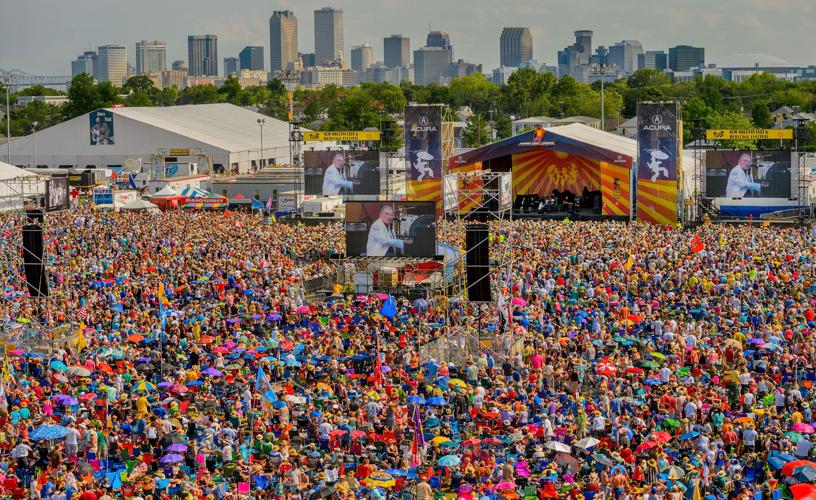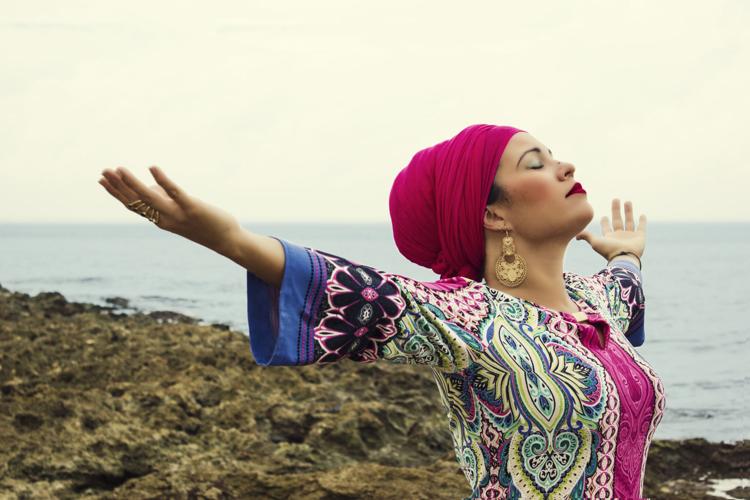The 2017 New Orleans Jazz and Heritage Festival presented by Shell opens Friday at the Fair Grounds with a main stage roster consisting entirely of musicians either based or born in New Orleans. That says a lot about the city, and the festival.
Unlike any other major music festival in the United States, the majority of the 500-plus acts on the Jazz Fest schedule are indigenous. They also span generations.
Throughout New Orleans, especially in the years since Hurricane Karina, “there’s been a conscious push to get the next generation to keep the traditions going strong,” Jazz Fest producer Quint Davis said. “That’s a sense of family and cultural tradition. The festival is, too. This is the 48th festival. That’s three generations. Up until recently, with the passing of Allen Toussaint and the end of some immortal era, we still had Allen and Irma Thomas at the same time we had the Revivalists.”
This year, the festival features funk legends the Meters, who played the very first Jazz Fest in 1970, and musical descendants Flow Tribe, whose members graduated from high school in the 2000s. Aaron Neville represents a family of New Orleans musicians who first achieved international acclaim in the 1960s; Jon Batiste and Troy “Trombone Shorty” Andrews, also sons of extended musical families, came to prominence in the 2010s.
A similar, multigenerational approach was applied to the festival’s focus this year on the music and culture of Cuba. Bookings range from rappers and pop star Pitbull, the Miami-born son of Cuban immigrants, to internationally renowned Cuban pianist Chucho Valdes and a traditional Cuban tobacco farmer and cigar roller.
The expanded Cultural Exchange Pavilion, on the central infield between Food Area 2 and the African Marketplace, will host many of the more than 150 Cubans on the bill. Indicative of its new priority, the Culture Exchange Pavilion schedule is included on the official Jazz Fest “cubes,” the stage-by-stage schedule grid.
Festival staffers started working on the Cuban programming two years ago, in a climate of lingering Cold War animosity. At the time, Davis said, "everything we wanted to do wasn't exactly legal. We had to go through a lot of hoops with both governments.”
The result is one of the most extensive showcases of Cuban music and culture in the United States in many years. "We're helping build bridges from Cuba to the U.S.," Davis said. "We're going to shine a light on Cuban music and culture for the whole world."
The festival evolves when it must. Changes implemented in 2016 remain in place this year. The big green bleachers, with seating for several thousand fans, are back at the Acura and Congo Square stages.
Chairs and blankets are not permitted anywhere on the dirt track surrounding the infield, to assist the flow of pedestrians. Expanded standing-room-only areas front the three major stages.
The festival is owned by the nonprofit New Orleans Jazz & Heritage Foundation, which uses proceeds to fund an array of cultural and educational programs. Jazz Fest is coproduced by Davis’ Festival Productions Inc.-New Orleans and AEG Live, one of the nation’s largest live entertainment companies.
It is Festival Productions that actually does most of the hands-on building and booking of the festival. Its staff, too, spans generations.
“We always talk about our ‘festival family,’” Davis said. “If we have 45 people working at our company, I’d say that 25 of them have worked together on the festival for 25 years or more. That’s not common.”
Many of this year’s “guest artists” have their own history with Jazz Fest. Guitarist and singer Trey Anastasio first performed at the Fair Grounds 21 years ago as a member of Phish, the Vermont jam band that cites the Meters as a primary influence. He’ll return this year with his horn-heavy solo band.
Finding thematic connections up and down the scheduling blocks is part of the fun. By coincidence or design, every act at the Gentilly Stage on Sunday is fronted by a woman: singer-songwriter Mia Borders, the New Orleans-based rapper Boyfriend, Cuban hip-hop group Telmary y Habana Sana, Elle “Ex’s and Oh’s” King and alternative pop star Lorde.
Even more so is the sense of discovery still possible at Jazz Fest, from the food booths to the craft stalls to the stages. You might not recognize the names at the Jazz & Heritage Stage, or the Gospel Tent, or the Lagniappe Stage. But all are part of what sets Jazz Fest apart.
“It really is a barometer of what is different about this festival ,” Davis said. “It’s got all these genres, and it’s directly related to the community. The festival itself is a family, and it has a soul. And it always reflects New Orleans.”






